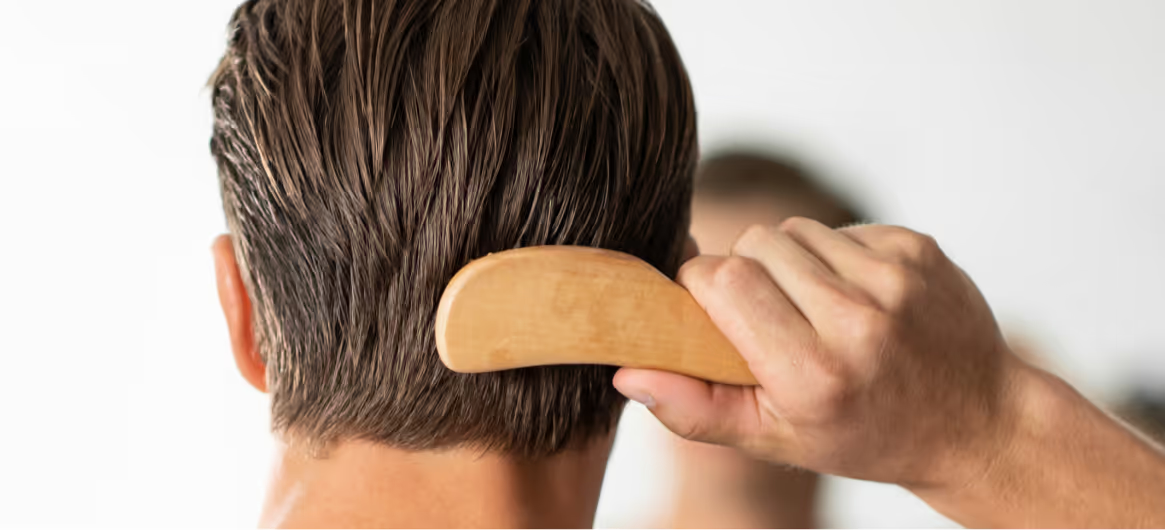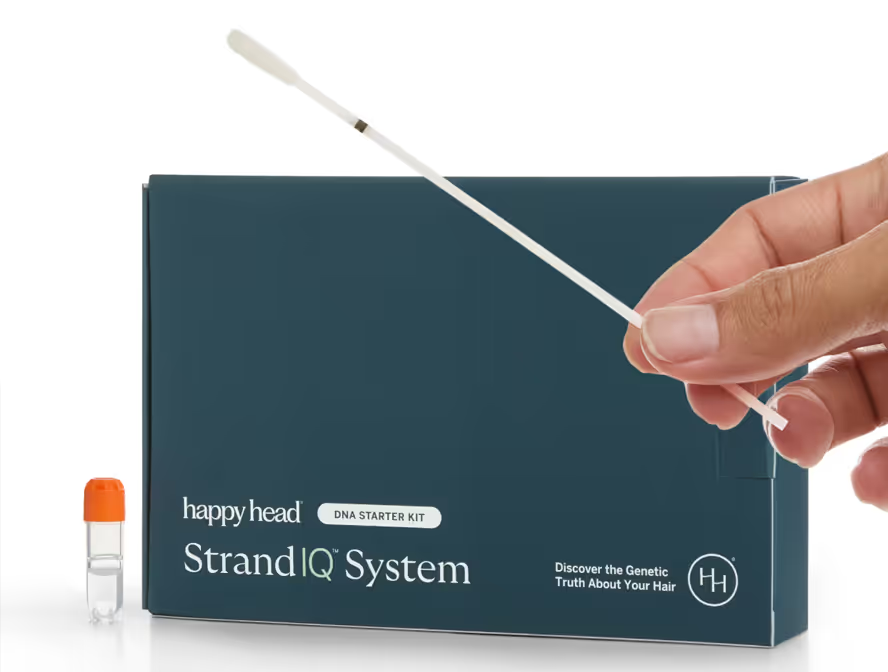Flaky patches. Itchy scalp. Embarrassing white flecks on your favorite black shirt. While dandruff and scalp flakiness may seem like minor annoyances, they often signal deeper imbalances in your scalp microbiome and immune response. The culprit? A combination of genetic predisposition, lifestyle factors, and environmental stressors.
Known medically as seborrheic dermatitis, this chronic condition results from an overgrowth of a yeast-like fungus called Malassezia (sometimes called Pityrosporum), which naturally lives on your skin. In some people, this fungus multiplies excessively, triggering redness, scaling, and itchiness—especially when the scalp’s defenses are weakened.
Your genetic profile may influence how your skin responds to fungal triggers, how fast your scalp sheds cells, and how sensitive your immune system is to environmental stress. By understanding your risk, you can take personalized steps to soothe your scalp and regain control.
The Genetic Link Behind Flaky Scalp
While dandruff isn’t contagious or dangerous, it is surprisingly complex. Several genes that regulate your immune response and skin cell turnover can increase your likelihood of developing seborrheic dermatitis. For example:
- Certain genetic variants affect how your body reacts to Malassezia, leading to an exaggerated inflammatory response.
- Variants can also speed up keratinocyte turnover, causing dead skin to accumulate and shed more visibly.
- Other genes may influence sebum production, creating an oily environment that encourages fungal overgrowth.
But genes are only part of the story. Your lifestyle, environment, and even your diet all play integral roles in helping to either calm or inflame your scalp.
Personalized Recommendations Based on Your Genetic Risk
The good news? With the right strategy, even those with high genetic susceptibility can reduce symptoms and prevent flares. Here’s how to manage seborrheic dermatitis based on your risk level:
Low Genetic Risk: Preventative Maintenance
If your Happy Head StrandIQ analysis has found that you are at a low risk for scalp flaking, your focus should be on prevention and consistency:
- Watch your diet
High consumption of dairy, sugary snacks, salty chips, or fried foods can disrupt your skin’s oil balance and fuel fungal growth. - Manage stress
Stress alters hormone levels and immune response—both of which can aggravate scalp conditions. - Use anti-dandruff products regularly
Shampoos with zinc pyrithione, selenium sulfide, or ketoconazole work best when used consistently, not just during flare-ups.
Medium Genetic Risk: Improve Diet and Balance Your Routine
If you’re at a genetically moderate risk for scalp flakiness, or if you find that your scalp is still red, itchy, and flaking despite preventative measures, you’ll need to pay closer attention to your lifestyle:
- Cut back on trigger foods
Reduce intake of fatty, salty, sugary, or dairy-heavy meals, which have been associated with dandruff. - Track hormonal changes and stress
Flare-ups often coincide with menstrual cycles, lack of sleep, or emotional stress—try mindfulness practices like yoga, journaling, and breathing exercises to counteract this. - Stick with a scalp routine
Products that target visible flaking should be used at least two to three times a week for sustained improvement. - Evaluate long-term habits
Take a holistic view of your wellness—small changes in diet, hydration, and stress levels can have a lasting impact.
High Genetic Risk: Daily Scalp Support and Stress Reduction
If your StrandIQ analysis has determined that you are at a high genetic risk for seborrheic dermatitis, a more proactive approach is needed:
- Shampoo more frequently—but gently
Washing three to four times per week with anti-fungal shampoos can help—but avoid harsh cleansing that strips your scalp. - Use targeted treatments
Apply scalp serums, oils, or tonics formulated with calming ingredients like tea tree oil, salicylic acid, or coal tar under dermatologist guidance. - Adopt a long-term wellness strategy
Monitor your diet, stress levels, product usage, and environmental exposures to reduce recurring symptoms. - Consult with your doctor
Our board-certified dermatologists may suggest prescription-strength solutions, especially if over-the-counter products haven’t improved symptoms or if flaking is severe and persistent.
Genetics Aren’t Destiny
While your DNA may increase your likelihood of dandruff or seborrheic dermatitis, it's only one piece of the puzzle. The right hair care regimen—like the ones offered by Happy Head—paired with mindful lifestyle choices, can help you manage or even minimize symptoms.
Focus on clean scalp care, balanced nutrition, stress reduction, and high-quality products—and your scalp will thank you.
Resources
StrandIQ SNP Marker Count: 9
StrandIQ Genes for Trait:
COL27A1, FPASL, LEF1, MCPH1, PSORS1C1, REL-DT, SLC39A11, YWHAG, ZBTB38
References:
Karakadze, M.A., Hirt, P.A., Wikramanayake, T.C. (2018). The genetic basis of seborrhoeic dermatitis: a review. Journal of the European Academy of Dermatology and Venereology, 32(4), 529–536. PMID: 29152796.
Sanders, M.G.H., et al. (2018). The genetics of seborrheic dermatitis: a candidate gene approach and pilot genome-wide association study. Journal of Investigative Dermatology, 138(4), 991–993. PMID: 29203360.
This content, including StrandIQ™ DNA analysis reports and any Happy Head products and/or services referenced therein, is for informational and cosmetic purposes only. It is not intended to diagnose, treat, cure, or prevent any disease. This content does not constitute medical advice and should not be used to make healthcare decisions. References to prescription treatments are educational in nature. Always consult a licensed healthcare professional for any medical concerns or treatment decisions.








.avif)

